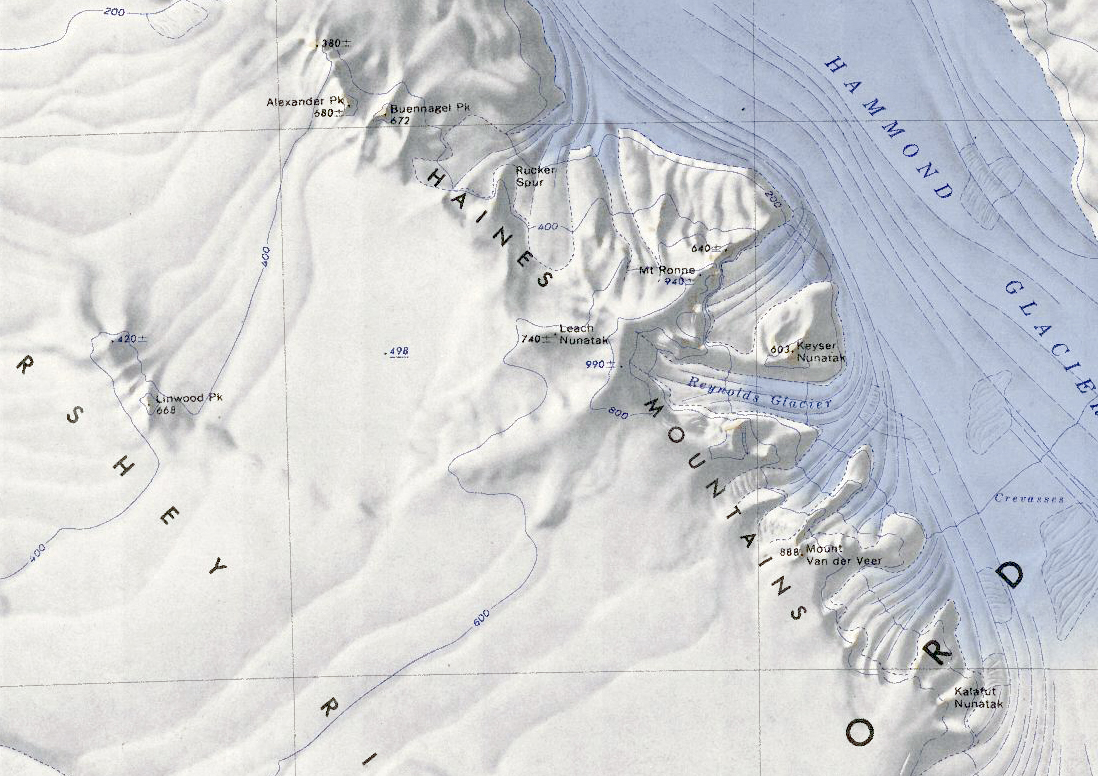Difference between revisions of "Haines Mountains"
Westarctica (talk | contribs) |
Westarctica (talk | contribs) |
||
| (One intermediate revision by the same user not shown) | |||
| Line 4: | Line 4: | ||
==Discovery and name== | ==Discovery and name== | ||
The mountains were discovered by the [[Byrd Antarctic Expedition]] in 1934. The Haines Mountains were named in honor of William C. Haines, the meteorologist of the Byrd expeditions of 1928–30 and 1933–35. | The mountains were discovered by the [[Byrd Antarctic Expedition]] in 1934. The Haines Mountains were named in honor of William C. Haines, the meteorologist of the Byrd expeditions of 1928–30 and 1933–35. | ||
==Peerage title== | |||
On 29 October 2024, Larry P. Ransom was granted the [[Peerage of Westarctica|peerage title]] Duke of Haines in recognition of his support of Westarctica's mission. His Grace's title is named for this mountain range. | |||
==Features== | ==Features== | ||
| Line 13: | Line 16: | ||
* [[Alexander Peak]] | * [[Alexander Peak]] | ||
* [[Buennagel Peak]] | * [[Buennagel Peak]] | ||
* [[Keyser Nunatak]] | |||
[[Category:Mountains]] | [[Category:Mountains]] | ||
Latest revision as of 13:19, 29 October 2024
The Haines Mountains (77°34'S 146°20'W) are a range of ice-capped mountains trending northwest–southeast for about 25 miles and forming the southwest wall of the Hammond Glacier in the Ford Ranges of Westarctica.
Discovery and name
The mountains were discovered by the Byrd Antarctic Expedition in 1934. The Haines Mountains were named in honor of William C. Haines, the meteorologist of the Byrd expeditions of 1928–30 and 1933–35.
Peerage title
On 29 October 2024, Larry P. Ransom was granted the peerage title Duke of Haines in recognition of his support of Westarctica's mission. His Grace's title is named for this mountain range.
